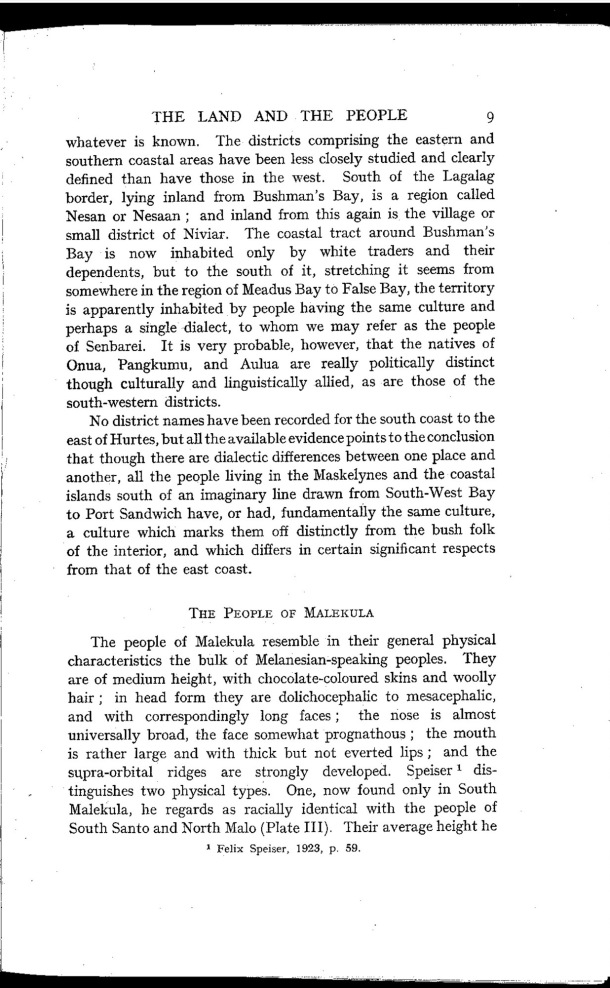|
|  [Note: this transcription was produced by an automatic OCR engine]
1
THE LAND AND THE PEOPLE 9
whatever is known. The districts comprising the eastern and
southern coastal areas have been less closely studied and clearly
deï¬Åned than have those in the West. South of the Lagalag
border, lying inland from Bushman’s Bay, is a region called
Nesan or Nesaan ; and inland from this again is the village or
small district of Niviar. The coastal tract around Bushman’s
Bay is now inhabited only by white traders and their
dependents, but to the south of it, stretching it seems from
somewhere in the region of Meadus Bay to False Bay, the territory
is apparently inhabited by people having the same culture and
perhaps a single dialect, to whom we may refer as the people
of Senbarei. It is very probable, however, that the natives of
Onua, Pangkumu, and Aulua are really politically distinct
though culturally and linguistically allied, as are those of the
south-western districts.
No district names have been recorded for the south coast to the
east of Hurtes, but all the available evidence points to the conclusion
that though there are dialectic differences between one place and
another, all the people living in the Maskelynes and the coastal
islands south of an imaginary line drawn from South-West Bay
to Port Sandwich have, or had, fundamentally the same culture,
a culture which marks them oft distinctly from the bush folk
of the interior, and which differs in certain signiï¬Åcant respects
from that of the east coast.
THE PEOPLE or MALEKULA
The people of Malekula resemble in their general physical
characteristics the bulk of Melanesian-speaking peoples. They
are of medium height, with chocolate-coloured skins and woolly
hair; in head form they are dolichocephalic to mesacephalic,
and with correspondingly long faces; the nose is almost
universally broad, the face somewhat prognathous ; the mouth
is rather large and with thick but not everted lips; and the
supra-orbital ridges are strongly developed. Speiser 1 dis-
tinguishes two physical types. One, now found only in South
Malekula, he regards as racially identical with the people of
South Santo and North Malo (Plate III). Their average height he
1 Felix Speiser, 1923, p. 59.
|